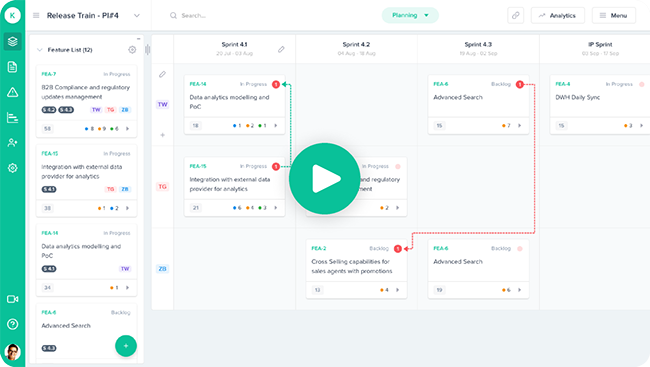In the Scaled Agile Framework, staying strongly committed to a plan is never advised. The reason is very simple; the requirements of the customer can change. For any professional that is a part of the Scaled Agile Framework, possessing a Lean-Agile Mindset is fundamental. It is in fact one of the pillars of the Scaled Agile Framework. It instills the belief to keep creating products of value to the customer by adjusting according to the ever-changing fluctuating requirements and needs. It guides you on producing products quickly and of high quality, keeping the needs of the customer in the focus and as their number one priority.
In this article, we will discuss what is the Confidence Vote, why is it important, and how it is done. We will shed light on how this event is a representation of how change needs to be valued and the need for continuously improving and evolving the processes and skills.
What is a Confidence Vote?
Confidence Vote is an activity done in the Program Increment Planning session after the risk assessment has been done. It is when all the team members sit together and raise their hand and with their fingers, vote their level of confidence on the PI Objectives being completed.
Why is Confidence Vote Important?
Participating in the confidence vote can be a huge burden for some individuals. These individuals may feel hesitant and pressured by their peers to vote. But for doing the vote of confidence, the primary requirement is to create an environment where the people are free to express themselves.
With the confidence vote, you get to have an environment where people feel comfortable sharing and expressing their views. It gives a boost in the morale of the team members as they should feel their opinion has been valued.
The confidence vote can only work when all the features and user stories are properly estimated and prioritized. All of the work being done needs to be kept transparent to everyone, with all the dependencies and risks clear. Inspect and Adapt sessions are also very important as they help in contributing towards finding gaps to promote relentless improvement.
How is it done?
Team members raise their hands and with their fingers show their vote of confidence. There are five levels of confidence, each of which can be represented by the fingers where 1 finger being the lowest and 5 fingers showing the highest level of confidence. This is called the “Fist of Five” method. To ensure consistency in the process, there should be a value or description assigned to each level.
If the average number of fingers is 3, then the PI Objectives are accepted and go onwards with the plan. However, if there are a few whose vote is 2 fingers or less, then they should be allowed to express their concern and provide insight into why they voted so low. Once their opinion is shared, re-planning needs to be done until the PI Objectives become acceptable.

The Scrum master participates by facilitating team members who are hesitant in voicing their concerns and to help everyone else to reach a consensus.
We shall now discuss in detail what each level is represented by the fingers.
1. Raise your hand with one finger
When raising one finger, it becomes a difficult situation. This means that the problem needs to be focused more and would require immediate involvement of the higher management. It needs to be resolved quickly and would require all the information necessary to be provided swiftly.
2. Raise your hand with two fingers
Although raising two fingers is not as alarming as raising one finger, this means that the problem is not clear. The information provided is not sufficient enough to be confident about. Thus, there needs to be more information and involvement from the higher management.
3. Raise your hand with three fingers
This situation seems as if everything is in order when in reality it isn’t. You can choose to proceed at this level but be mindful of the fact that being in this state for too long is not advised as it could lead to having technical debt, budget outages, etc.
4. Raise your hand with four fingers
This shows that the teams are confident on where they are. The teams are working at an optimum pace. There is perfect communication, collaboration, and overall cooperation.
5. Raise your hand with five fingers
Continuous and relentless improvement is the soul of agile. When you raise your hand and show five fingers, it means that you are confident over your abilities but have the desire to improve. This improvement can be done in both ways. If you seem to be over planning, then you need to look closely into your current processes and tweak them. If you are under planned, that means that you are trying to play it safe and staying in your comfort zone. In order to grow, you need to take risks and accept challenges. You need to experiment more.
Conclusion
This activity greatly enhances transparency and helps create alignment amongst the teams, which eventually becomes advantageous to smooth execution of the PI and to create higher quality products. This is a great activity in improving and maturing the processes.
About Kendis
Kendis is a leading solution for Distributed PI Planning. It is a new way to plan and manage your dependencies, risks, and objectives. Get actionable insights into your program increment’s progress and scope changes.
Try out 10 days free trial or book a demo with our product expert.
Kendis is a digital solution for PI, Tribe, and Big room Planning that works on top of Jira and Azure Boards.










